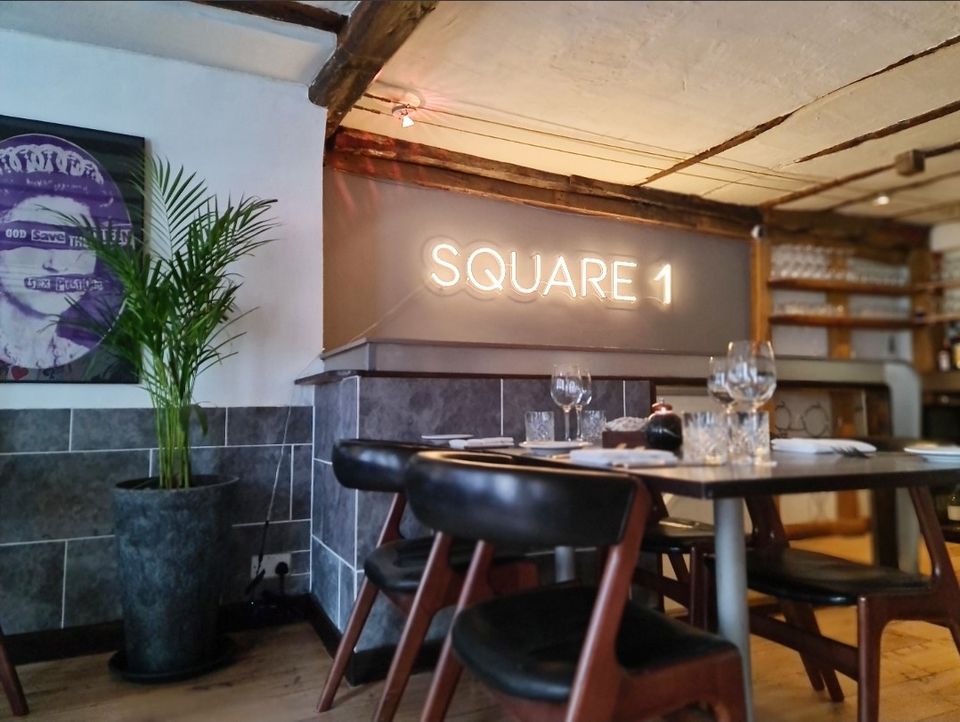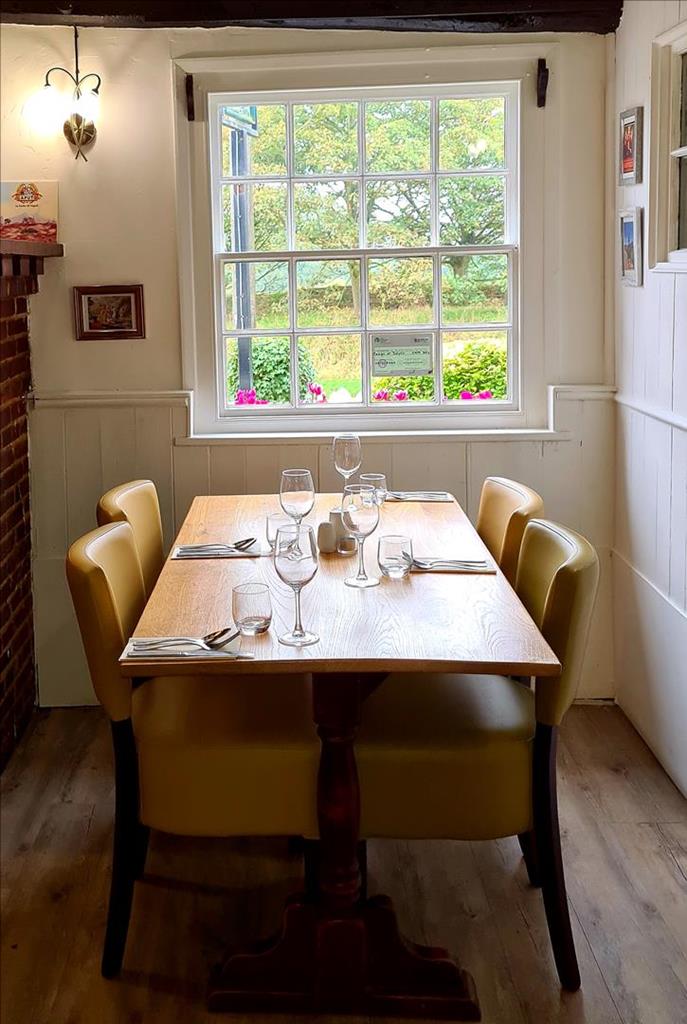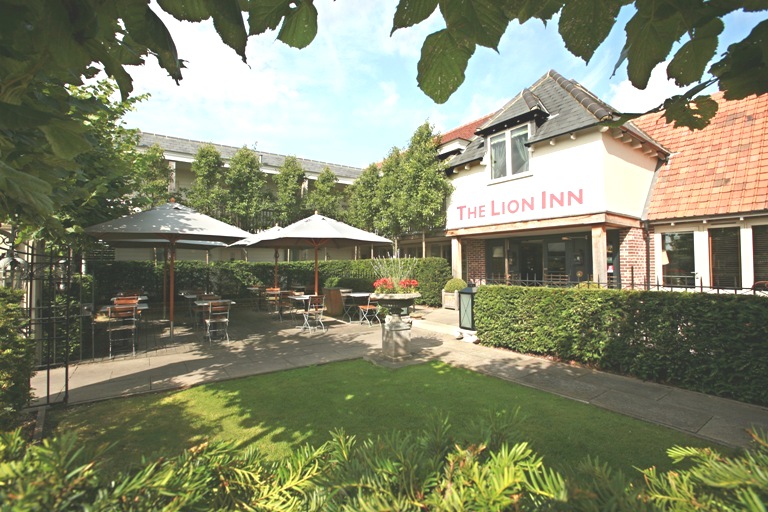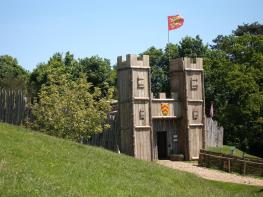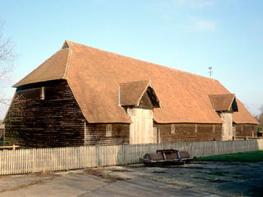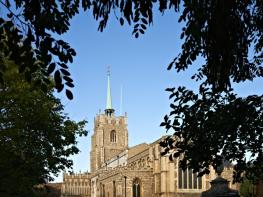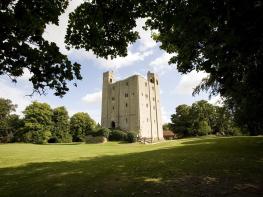The Pig & Truffle offers three well appointed en suite rooms, with a range of extra…
Around Little Dunmow

A short walk around the attractive village linked to the famous 'Flitch'.
2.25 miles (3.6kms)
About the walk
The tiny village of Little Dunmow was the original home of an ancient ceremony known as the Dunmow Flitch Trial. A flitch, or side of bacon, was awarded to a married couple who could claim that they had lived in total peace and harmony for a year and a day.
Nobody is sure how or why the ceremony came to be, but one theory is that the church authorities preferred couples to marry rather than live together as common law man and wife, and a side of bacon, at a time when both food and money were scarce, provided an edible bonus. Winning such a prize in those days was equivalent to winning today's national lottery, and one enterprising couple made a tidy profit by carving off slices to sell to hungry sightseers!
The flitch revived
The ceremony fell out of favour by the mid-18th century but was revived in 1855, thanks to a publicity stunt by novelist Harrison Ainsworth (1805–82). His book, The Flitch of Bacon, was a hit the year before, and in an effort to cash in on its success, he was instrumental in arranging for the Flitch Trial to be moved from Little Dunmow to Great Dunmow. Presiding as judge, he awarded a flitch of bacon to an Ongar builder and his wife and, ever since, the Flitch Trial has been held at Great Dunmow every leap year.
Glory days
The church is all that remains of the old Augustinian priory of Little Dunmow, and its main claim to fame is its association with the Flitch Trial. Founded in the 12th century it was, like other religious houses, dissolved by Henry VIII in 1536. As you leave the church on this walk you pass Priory Place. The house was one of several which belonged to the priory. Beyond it is the site of the priory fishponds. These were kept well stocked to provide food.
A line of wildlife
Part of the walk is along the Flitch Way, a path that was once an old railway line that ran from Bishop’s Stortford to Braintree. The line opened in 1869 and provided services for passengers, farmers and local industries who transported goods to main towns along the route. Passenger services stopped in 1952, and the line was eventually closed down in 1969. Today high hedgerows on either side of the railway form a canopy full of wildlife. Rangers and volunteers work year round to keep the footpaths clear and to help regenerate the area for plants and wildlife, including butterflies, bats and dormice.
Walk directions
Park outside the Flitch of Bacon pub. With your back to the pub turn right and right again into Grange Lane, then turn left towards the church at the public footpath sign. Continue past a row of houses, and at the fingerpost by the church keep ahead for a few paces, then turn left in front of the iron gates to Priory Place. The path becomes enclosed and shortly reaches a playing field. Follow the waymarks and take the right-hand field-edge path, and go through a kissing gate to join the Flitch Way.
Turn right onto the Flitch Way, a 15-mile (24km) linear nature park occupying the site of the old Bishop's Stortford–Braintree railway line. Follow the Flitch Way for 1 mile (1.6km) and look out for where you turn right at Flitch Way Country Park and National Cycle Network signs, before the metal and brick bridge.
At a set of waymarks a few paces further on turn right, away from the bridge, along an uphill track. Continue along this meandering path to the right of the A120 to pass Clobbs Cottage.
At the T-junction turn right away from the footbridge over the A120 and follow Grange Lane back into the village. At the T-junction turn left into The Street, where you will see an old red water pump on the left just before the Flitch of Bacon pub. This was erected in 1887 to mark Queen Victoria's Jubilee by Warners, a foundry that made many village pumps, as well as bells and carillons. Continue to the pub for a well-earned rest.
Additional information
Grassy and farm tracks, field-edge paths liable to be muddy after rain
Disused railway track, riverside meadow and farm tracks
A nice frolic on Flitch Way but watch out for cyclists, and keep on lead by fields
OS Explorer 195 Braintree & Saffron Walden
Informal street parking in Little Dunmow
None on route
WALKING IN SAFETY
Read our tips to look after yourself and the environment when following this walk.
Find out more
Also in the area
About the area
Discover Essex
Essex is full of pleasant surprises. It has the largest coastline of any county in England, with its fair share of castles, royal connections and scenic valleys. Take Colchester, for example, which was built by the Romans and is Britain’s oldest recorded town. Its castle contains the country’s largest Norman keep and yet, a stone’s throw from here, East Anglia’s newest arts centre promises to put Colchester firmly on the map as Essex’s capital of culture.
Tidal estuaries are plentiful and their mudflats offer migrating birds a winter feeding place. Essex was known as the land of the East Saxons and for centuries people from all over Europe settled here, each wave leaving its own distinctive cultural and social mark on the landscape. Walking a little off the beaten track will lead you to the rural retreats of deepest Essex, while all over the county there are ancient monuments to explore:
- the great Waltham Abbey
- Greensted, thought to be the oldest wooden church in the world
- the delightful village of Pleshey has one of the finest examples of a former motte-and-bailey castle
- Hedingham Castle, magnificently preserved and dating from the 11th century.
Nearby stays
Restaurants and Pubs
Nearby experiences
Recommended things to do
Why choose Rated Trips?
Your trusted guide to rated places across the UK
The best coverage
Discover more than 15,000 professionally rated places to stay, eat and visit from across the UK and Ireland.
Quality assured
Choose a place to stay safe in the knowledge that it has been expertly assessed by trained assessors.
Plan your next trip
Search by location or the type of place you're visiting to find your next ideal holiday experience.
Travel inspiration
Read our articles, city guides and recommended things to do for inspiration. We're here to help you explore the UK.




